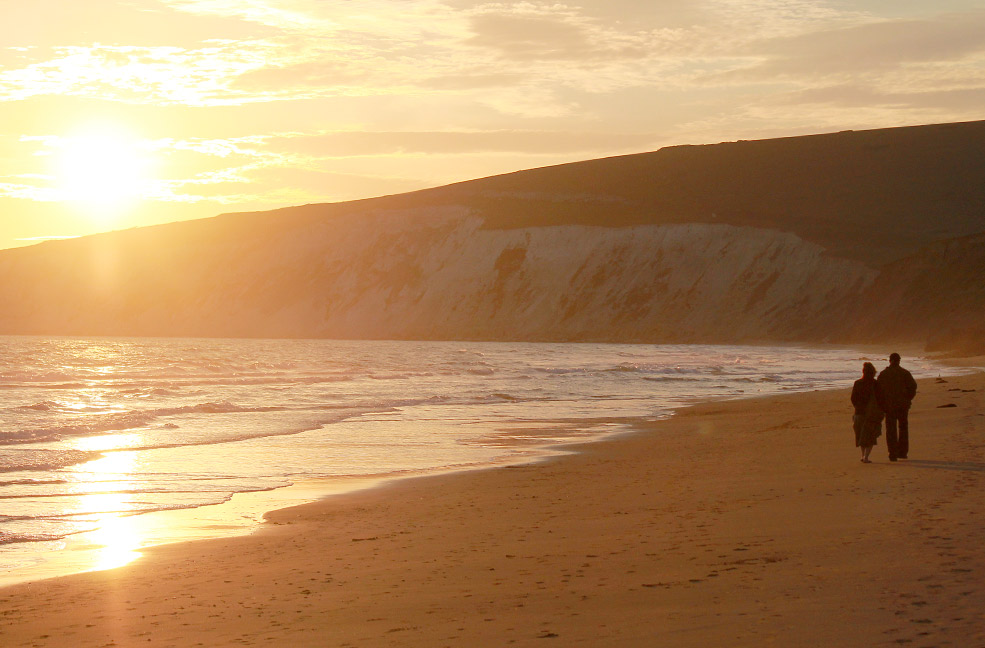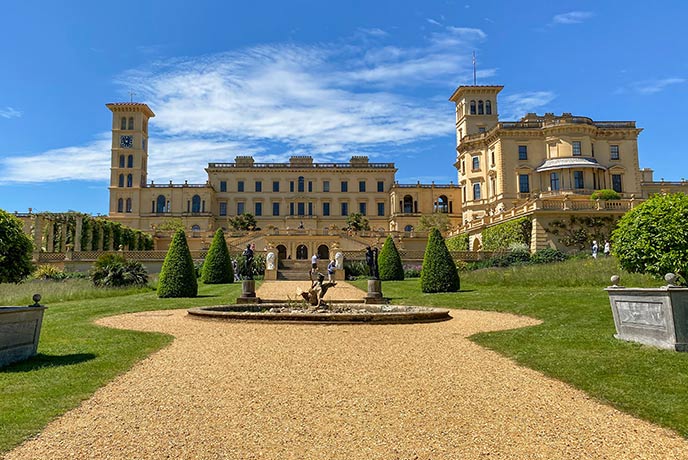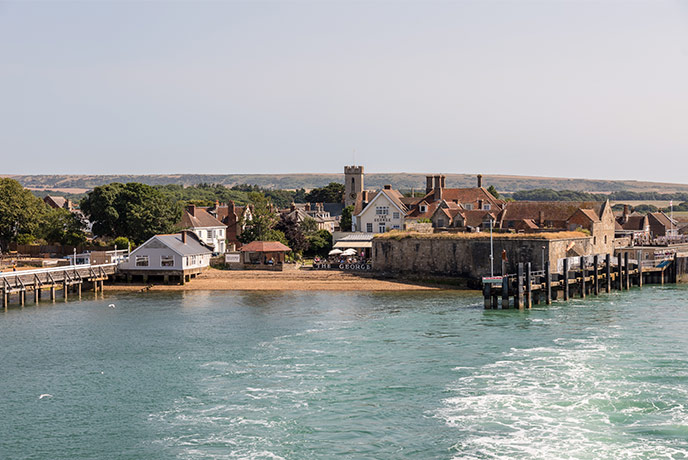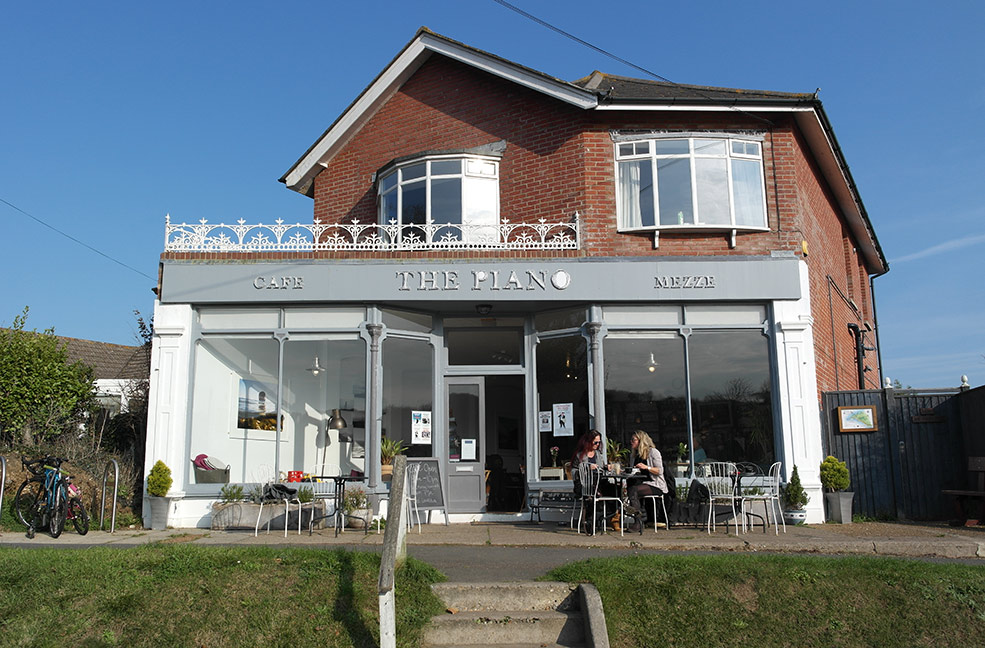The Isle of Wight is packed with headline attractions, from impressive rock formations and historic houses to a series of castles and forts that line the coast and offer a peek into the Island’s fascinating past. But look a little closer, and you’ll soon find a treasure trove of secret spots to explore on the Isle of Wight.
Oh yes, whether your tastes lie in ancient trees, secret coves, or historic sites hidden beneath the ground, the Isle of Wight invites you to step off the beaten track at every turn. Doing so will reward you with sights and sites that are often overlooked, offering peaceful explorations that celebrate everything from food and nature to ancient histories.
Ready to explore? Here are our favourite off-the-beaten-track, hidden gems to visit on the Isle of Wight.
Quarr Abbey, Ryde
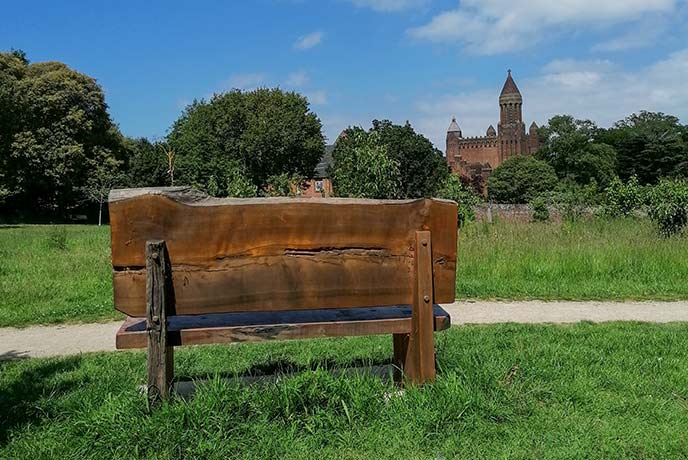
Tucked away within 200 acres of untouched countryside near Ryde, Quarr Abbey is a secret worth sharing. The beautiful, red-bricked monastery is an astonishing work of art, made all the more captivating by the lush trees that surround it.
Home to a small group of Benedictine monks, Quarr is a working abbey, which means there’s always something going on, from live performances within the vaulted church to family-friendly trails through the impressive grounds. We particularly recommend visiting the Quarr Abbey pigs, a hidden gem within a hidden gem! You’ll also find a lovely tearoom and visitor centre, inviting you to while away a fascinating day at this historic marvel.
Gurnard’s hidden beach, nr Cowes
The Isle of Wight is blessed with a coastline of contrasts, which has given it a reputation as ‘all of England in miniature’. Most of the rocky and rugged beaches can be found around the isolated south coast – but there are exceptions.
Gurnard’s main beach is an Instagram favourite with its row of green beach huts providing the perfect foreground to the sunset-rich background.
However, take a small walk and you will find the village’s second beach, one of the Isle of Wight’s truly special hidden beaches.
You can discover this secret cove by walking behind Gurnard Sailing Club along the Shore Path. After about 100 metres, you’ll climb down onto a shingle and sand beach that’s backed by woodlands.
Take it from us, it’s best visited at low tide on a summer’s evening when the Solent switches from its daytime sparkle to a magnificent orange as the sun sets over Southampton.
Extend your visit with a walk into Cowes, which has a good selection of independent shops and places to eat.
Newport Roman Villa, Newport
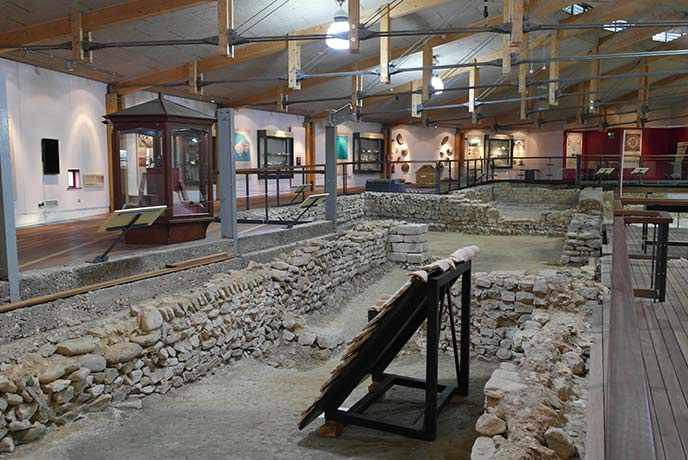
The Romans occupied the Isle of Wight for around four hundred years and gave it the name Vectis. Seven Roman villas have since been discovered, although most are undisturbed and are yet to give up their secrets.
The biggest and busiest is Brading Roman Villa, with its famous mosaics and well-preserved walls. However, those in search of something different should head for Newport Roman Villa, which sits on an unassuming residential road in Shide - a truly hidden spot!
It is thought to have been constructed in 280AD and was discovered in the 1920s when a homeowner began digging foundations for a new garage.
Archaeologists uncovered luxuries such as underfloor heating, which suggests that the building was part of a grand estate in the centre of the Island. Families can follow the discovery trail or try out activities such as mosaic making and a Roman play kitchen.
The Villa is small and only opens during peak season, so it’s worth a quick check online before visiting.
The Dragon Tree, Brighstone
Welly walkers and puddle splashers will love a trip to the Dragon Tree in Brighstone, which lies across the Buddle Brook. The stream once powered a local mill, but now provides a fun spot for splashing in the sun.
The mighty oak across the stream appears to be growing sideways, with its colossal branches stretching out wide. It is thought to have been knocked over by a storm, but wasn’t completely uprooted thanks to its impressive branches.
The local legend is a far more interesting tale!
The story goes that a dragon brought terror to Brighstone’s villagers. A returning crusader fought the dragon, which turned to wood once defeated and took root. Whichever story you believe, you can find it by walking down a footpath off New Road.
While in Brighstone, take a few minutes to visit the village’s charming tea rooms, museum, and greengrocers. Brighstone Museum must be one of the quaintest in the country and is run by volunteers.
Bembridge Fort, Culver Down

There are many fascinating historic buildings on the Isle of Wight. Carisbrooke Castle and Yarmouth Castle are both fantastic family days out, and Osborne House is a wonderful example of why Queen Victoria loved the Island, but ‘unrestored’ Bembridge Fort is one for true explorers.
Previously run by the National Trust before passing on to the Bembridge Fort Trust, Bembridge Fort sits on Culver Down, overlooking the eastern coastal resorts of Sandown, Shanklin, and Lake. The fort was one of many built in the 1860s around the Isle of Wight’s coastline. Others include the Old Battery at The Needles (another hidden gem worth a visit on the Isle of Wight) and Fort Victoria in Yarmouth.
On a tour, you will be able to see the hexagonal shape of the fort, which was built to accommodate more than 100 men. Six imposing guns once aimed out to sea to fend off the threat of French invasion, and during the Second World War, it served as a base for the Isle of Wight’s home guard, and turrets were added to improve visibility.
Although the fort is currently closed for repairs, you can still book private group tours through the trust, with special events also opening up this historical hidden gem to the public, so make sure to keep an eye on their website for all the latest news.
St Lawrence Old Church, South Wight
Historic churches and other fascinating places of worship are scattered throughout the Isle of Wight. Tucked away in a discreet location in the South Wight, St Lawrence Old Church holds a special charm and has more than earned the title of one of the Isle of Wight’s most charming hidden gems.
At one stage, it was thought to have been the smallest church in England, before it was extended. It’s certainly one of the oldest on the Island, with a history dating back to the late 12th century.
Inside, you’ll find wooden beams, traditional pews, and an aisle down the right-hand side to make the most of the space.
Take a look at the neatly compiled list, which records every rector of the church, right back to 1201. The church operated without electricity until 1970!
It can be reached by wiggling your way down Seven Sisters Road, which leads to the famous Undercliff Drive in St Lawrence. Take care as you enter – the doorway is much lower than most church entrances, so you might need to duck.
If you’re fascinated by St Lawrence Old Church, then you might also like to visit St Agnes Church. This small building in Freshwater Bay is more modern, but its thatched roof and links to Alfred, Lord Tennyson make it a local attraction.
Royalists should head for St Mildred’s Church in Whippingham, otherwise known as Queen Victoria’s Church. The Queen’s daughter was married here in 1885 and was buried at the church 60 years later.
Seapot Beach Café, Ventnor
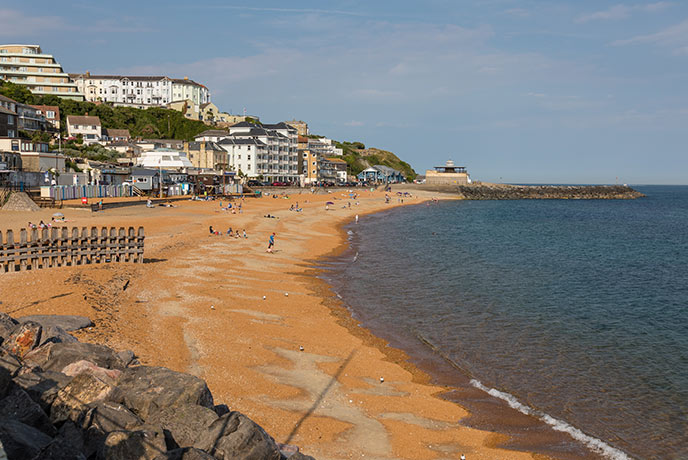
If you like your cafés quirky and off-the-beaten-track, head for the Seapot Beach Café in Ventnor.
It sits in a stunning spot along the seawall, which links Ventnor and Bonchurch. In front of the café lies the English Channel with Cherbourg and Le Havre the nearest land.
The café serves up traditional ploughman’s lunches with ham, pickles, and doorstop bread, or a fisherman’s alternative with prawns, crab, and salmon. You can even grab a vegan alternative with olives, hummus, artichokes and sundried tomatoes. Alternatively, tuck into a latte and a slice of something sweet.
The Seapot is very dependent on the weather, with most of the seating outdoors and very much al fresco! Catch it on the right day and it’s a real treat.
There is no vehicle access, so you can reach it on foot from Ventnor’s Eastern Esplanade car park or sneak down the steps off Wheelers Bay car park.
True Food Kitchen, Niton
Earn your supper with a memorable trip to The True Food Kitchen in Castlehaven in the South Wight. This is more than a meal out – it’s an experience!
The quirky restaurant is almost entirely outdoors and can be found at one of the Island’s least-known beaches, making it a true hidden gem for foodies and beach lovers alike.
Diners park around a quarter of a mile from the restaurant and make their way down a leafy footpath off St Catherine’s Road. You’ll enjoy views of St Catherine’s Lighthouse before finally reaching the cosy cove with its fishing boats and sea birds.
Once you arrive, you’ll dine on Japanese-inspired bao buns, poke bowls, and freshly caught seafood as well as Isle of Wight burgers and tempura.
As it is an al fresco eatery, opening hours are dependent on the weather and booking is advised!
PLUTO, Shanklin Chine and Wildheart Animal Sanctuary
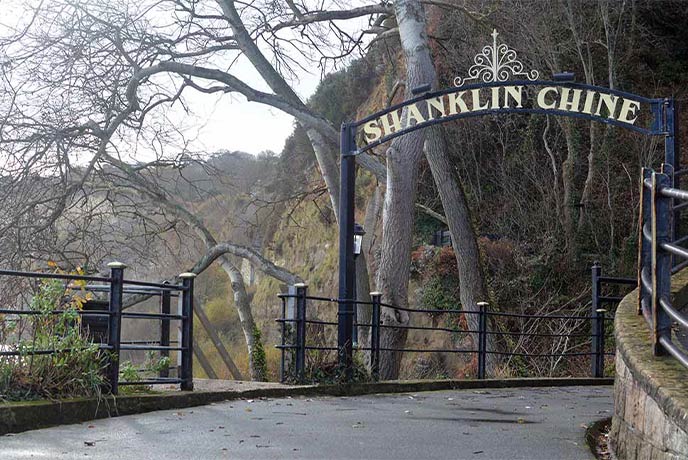
Visitors to Shanklin and Sandown could be forgiven for missing the towns’ secret role in the Allied victory in the Second World War.
Amongst the waterfalls and the flora and fauna of Shanklin Chine are around 60 metres of pipe, which were known as the Pipeline Under The Ocean (PLUTO). These were discreetly laid in Shanklin in 1944 and continued all the way to Cherbourg. The plan was to send much-needed fuel from the UK to troops in France along a 70-mile pipe.
The other part of the plan required pumping stations to be hidden in Sandown. A total of 13 pumps were placed inside a former fort in Sandown, which is now home to lions and tigers at Wildheart Animal Sanctuary. Another was hidden inside an ice cream shop!
Once it was up and running, PLUTO sent millions of gallons of fuel across the Channel. A small plaque on Shanklin Seafront marks the location where the pipes entered the sea. The plaque itself has a curious history, as it accidentally ended up at a scrap yard when Shanklin’s Pier was destroyed in a storm in 1987. Thankfully, it was spotted and eventually returned.
Binnel Bay, South Wight
Binnel Bay is a beach that you can often enjoy all to yourself. The beach is stony with a footpath that requires scrabbling and a good pair of walking boots!
You will find it in the South Wight, which has a string of isolated bays. Head for St Lawrence and walk down Old Park Road. The route down will send you past a pottery and onto a public footpath, with cows grazing in the fields nearby. Once you’ve arrived, you’ll likely see cormorants sitting on rocks just off the shore.
You may spot the remains of a wall in the water, which is known as Spindler’s Folly. The story goes that a German entrepreneur saw nearby Ventnor thriving and set about constructing an esplanade. The Victorian-era endeavour was mostly destroyed by winter storms, but the remains of the wall were never removed.
White Tailed Eagles

Ok, so this one might not be a hidden gem in terms of place, but it’s certainly a well-kept secret - and a rare one at that!
Twitchers and wildlife lovers come to the Isle of Wight to explore the wading birds of Newtown Creek or the precious red squirrels that hide in woodland. However, the ultimate prize is a sighting of the White Tailed Eagle – otherwise known as the sea eagle.
These magnificent creatures disappeared from the skies of Southern England for more than 200 years. It was on Culver Cliff in the East Wight that the White Tailed Eagles were last seen in England, back when George III sat on the throne and just four years after the United States was founded.
In 2019, the Isle of Wight was chosen as the location for a reintroduction programme. Six eagles were released after hundreds of hours of background work.
They now feast on grey mullet, caught in the shallow waters of the Solent, and make their nests in nearby forests.
We can’t guarantee you’ll spot one, but you’ll want to have a camera with you just in case.
While visiting the magical Isle of Wight, choose from our selection of welcoming holiday cottages on the Island to discover the perfect base for your stay.


